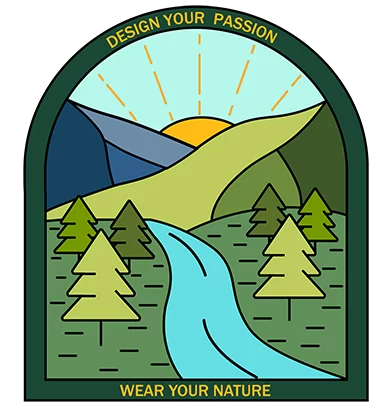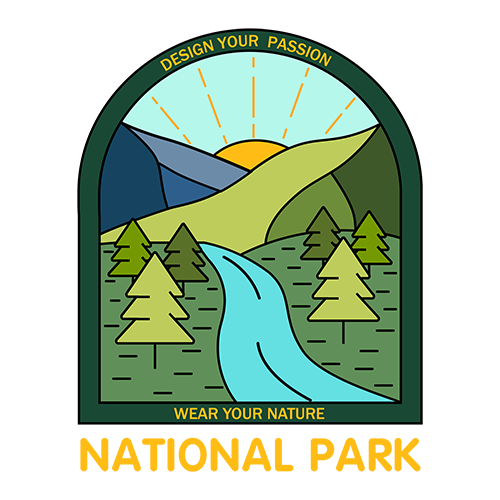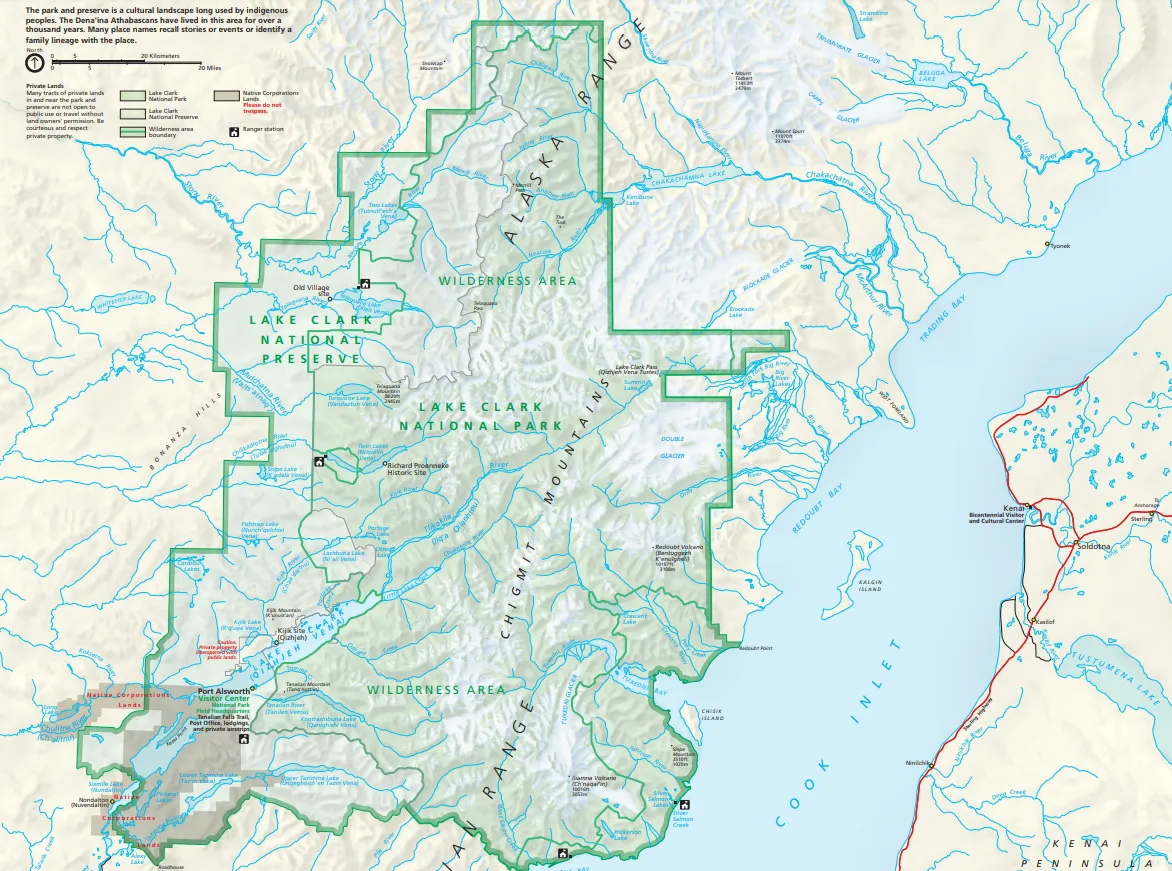Lake Clark National Park and Preserve
Tucked away in the center of south-central Alaska, Lake Clark National Park and Preserve is a stunning mix of untouched nature, towering volcanoes, and colorful wildlife. Created in 1980, this huge area covers more than 4 million acres, displaying striking scenery shaped by ancient ice and live volcanoes. The park is a sanctuary for various environments, ranging from dense forests and high-altitude meadows to rugged peaks and peaceful lakes, creating a dream destination for those who enjoy the outdoors, photography, and the wonders of nature.
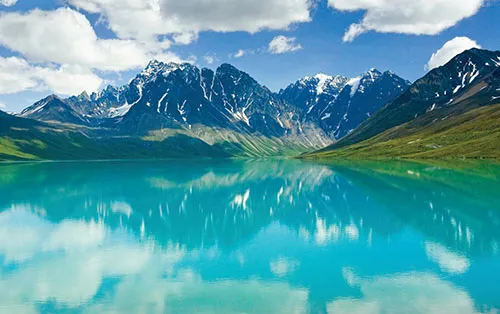
Lake Clark National Park and Preserve Overview
Lake Clark National Park and Preserve located in southwest Alaska, is approximately 100 miles southwest of Anchorage. Initially designated as a national monument in 1978, it was later established as a national park and preserved in 1980 through the Alaska National Interest Lands Conservation Act. The park encompasses numerous streams and lakes that are crucial to the Bristol Bay salmon fishery, including Lake Clark itself.
It safeguards various ecosystems such as rainforests along Cook Inlet’s coastline, alpine tundra, glaciers, glacial lakes, significant salmon-spawning rivers, and two volcanoes, Mount Redoubt and Mount Iliamna. Mount Redoubt has been active, with eruptions occurring in 1989 and 2009. Due to the diverse habitats within the park, a vast array of Alaskan wildlife, both terrestrial and marine, can be observed in and around the area. Salmon, especially sockeye salmon, play a vital role in the ecosystem and local economy. The Kijik River and Silver Salmon Creek attract large numbers of brown bears who come to feed on the spawning salmon, making bears watch a popular activity in the park.
Access to the park is limited as there are no roads leading to it; visitors typically arrive by boat or small aircraft, often floatplanes. The primary settlement within the park and preserve is Port Alsworth situated on Lake Clark. Additionally, there are five other nearby settlements primarily inhabited by Dena’ina natives. Before the park was established, isolated cabins were scattered throughout the region, with the most famous belonging to Richard Proenneke. His documented experiences living alone at Twin Lakes were featured in the film “Alone in the Wilderness” in 2003.
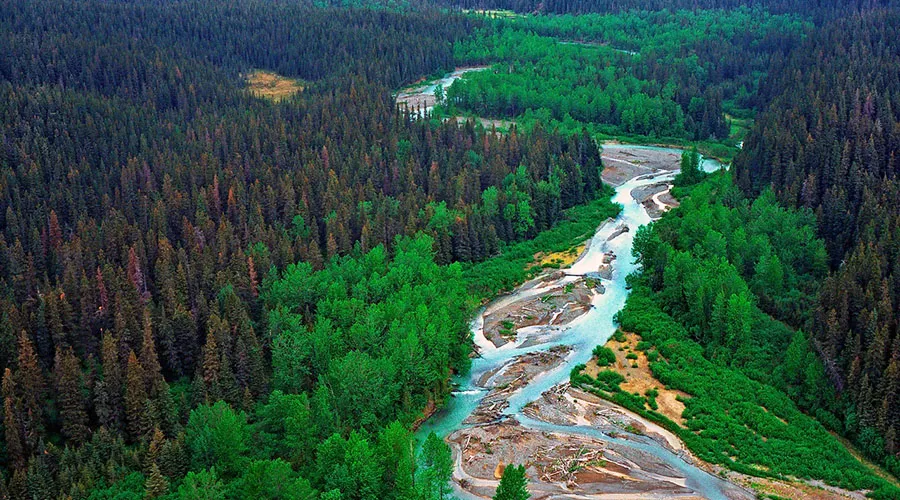
Things to do in Lake Clark National Park and Preserve
Lake Clark National Park and Preserve has a wide range of activities to cater to everyone’s interests and skill levels. Let’s explore some of the best things you can do in this park!
Visit Port Alsworth
Port Alsworth, a cozy little village nestled on the shores of Lake Clark, boasts an airport, the Lake Clark National Park Visitor Center, and a variety of lodges and resorts. For an extended stay in Lake Clark, Port Alsworth is a top choice for accommodation.
One of the accommodations in Port Alsworth is Lake Clark Resort, previously known as the Farm Lodge. This resort, situated right on the shores of Lake Clark, provides a range of sightseeing tours within Lake Clark National Park.

Hiking
Exploring Lake Clark National Park and Preserve through hiking is not only popular but also incredibly rewarding.
One of the most famous hikes in the park is the Telaquana Trail, a tough 25-mile journey that showcases some of the park’s most breathtaking landscapes. Hikers will be treated to magnificent sights like glaciers, waterfalls, and crystal-clear alpine lakes along the way. While it’s definitely a challenging hike, the sense of accomplishment at the end makes it all worthwhile.
If you prefer a more relaxed hiking experience, don’t worry! The park has plenty of shorter trails that are equally enchanting. Take the Tanalian Falls Trail, for example, a moderate 4-mile hike that leads to a mesmerizing waterfall flowing over a rocky gorge. Or try the Twin Lakes Trail, which offers stunning vistas of the park’s famous turquoise lakes and the majestic mountains that surround them.
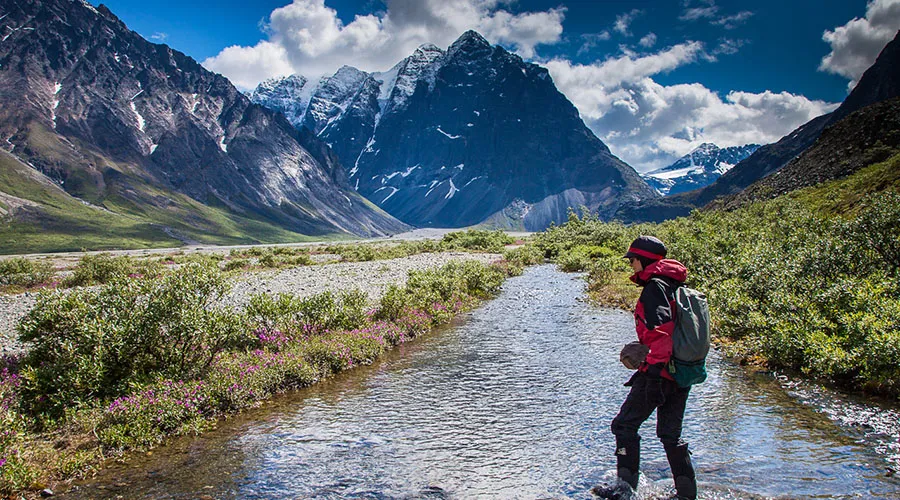
Take A Flightseeing Tour
In a national park without roads and various ecosystems, the best way to explore is from the air.
If the weather allows, flying from Anchorage to Port Alsworth will take you through Lake Clark Pass, offering views of the Chigmit Mountains, river valleys, and glaciers in that part of the park.
Given more time, you can also enjoy flightseeing tours of Redoubt and Iliamna volcanoes, the stunning turquoise lakes, and the coastal areas of the park.
It’s important to note that weather plays a significant role in your experience. Weather in Alaska can change quickly, impacting activities like flightseeing and kayaking. Stay flexible with your plans, as a sightseeing trip may need to be adjusted or canceled due to weather conditions at some point during your visit.

Visit Twin Lakes
Twin Lakes, also called Nilqidlen Vena in Dena’ina, are a pair of stunning turquoise lakes situated on the western side of the national park. The ideal way to admire these lakes is by taking a flightseeing tour. If you’re based in Port Alsworth, a delightful 25-minute flight will transport you to Upper Twin Lake. During this scenic journey, you’ll be treated to awe-inspiring vistas of Lake Clark, the Twin Lakes, and the vibrant mountains that separate them.
At Upper Twin Lake, you can explore the historic Proenneke Cabin, trek to Teetering Rock, and enjoy a stay at Windsong Lodge. This spot is also a top choice for camping within the park. Hope Creek Campground is conveniently located near the Proenneke Cabin.
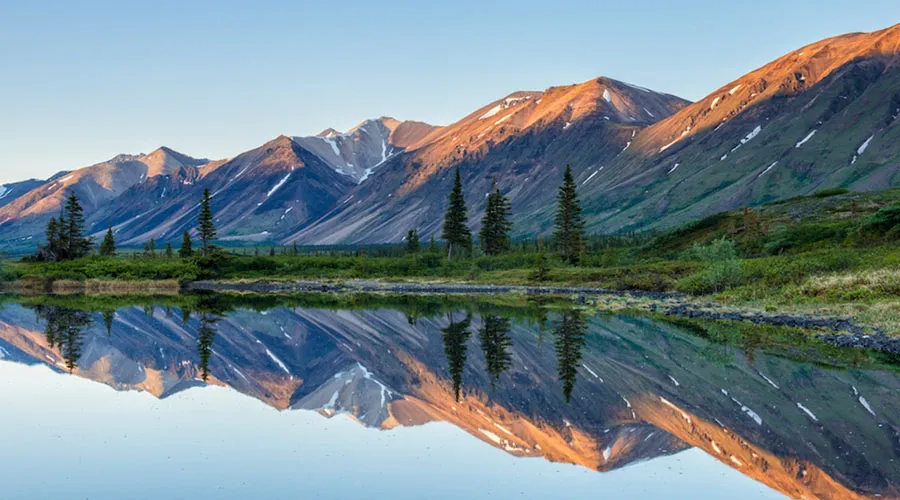
The Proenneke Cabin Tour
Back in May of 1968, Richard Proenneke made his way to Twin Lakes and put together a cozy log cabin all by himself, using just basic hand tools.
During his time at the cabin, Proenneke captured his daily life and the cabin’s construction through photos, videos, and tons of journals. A bunch of this cool stuff has been shared in books and on a YouTube channel. If you’re curious to know more about his adventures, there’s even a website dedicated to Richard Proenneke.
Nowadays, the National Park Service looks after the cabin, making sure it stays in good shape. You can only visit it by joining a tour led by a park ranger from late May to mid-September. To reach the cabin, you’ll need to arrange a float plane or hop on the Twin Lakes Tour provided by Lake Clark Resort.
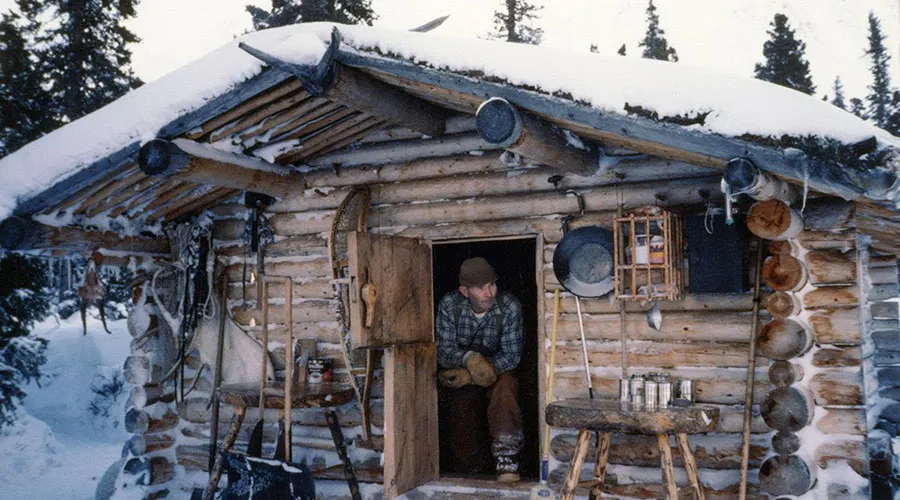
Visit Turquoise Lake
If you’re flying over Lake Clark National Park, don’t miss out on the stunning Turquoise Lake located just north of Twin Lakes. The water in Turquoise Lake is even more vivid and brighter compared to its neighboring Twin Lakes.
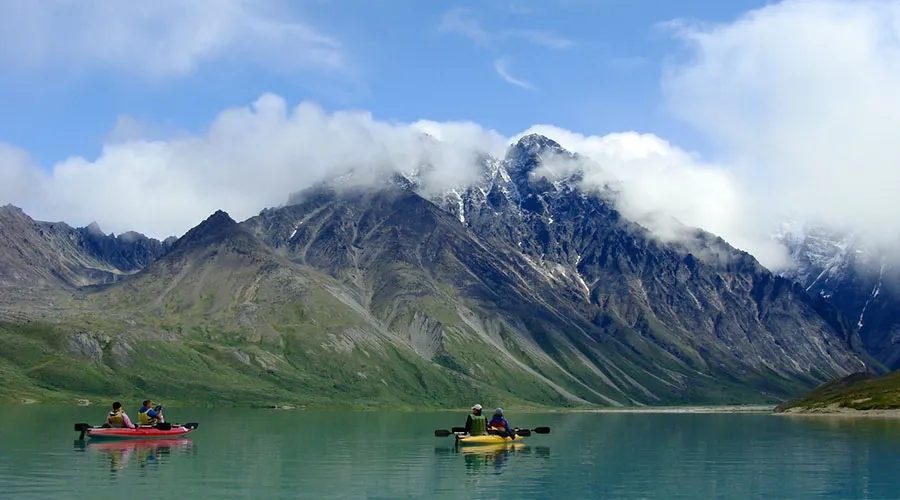
Bear Viewing
There are numerous excellent locations within Lake Clark National Park where you can observe black and brown bears. Among the most popular spots to explore are Chinitna Bay and Silver Salmon Creek, both situated along the Cook Inlet coastline.
A very common way to visit Lake Clark National Park is by taking a day trip to Chinitna Bay from Anchorage or Homer. You can take a half-day tour, fly to the coast, hope to see bears searching for clams on the beach, observe the bears, and then return to Anchorage or Homer. Lake Clark Resort can also organize this if you are staying in Port Alsworth.
The prime time to witness brown bears on the coast is from late spring to early fall.
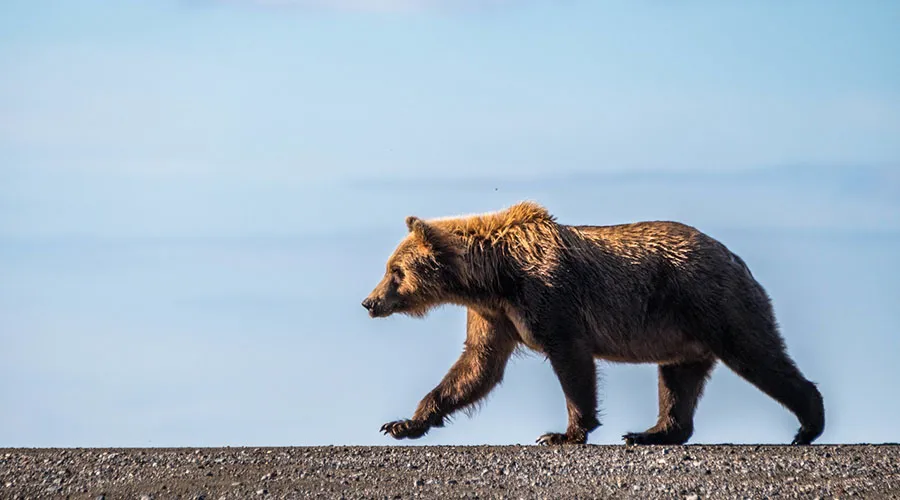
Fishing
Lake Clark offers great fishing opportunities for anglers who enjoy adventure. The park and preserve contain some of the cleanest fish habitats in the National Park system.
Fishing is best from May to October, with peak season in July and August when salmon runs occur. Lakes may still have ice until June. Ice fishing is a common winter activity when the lakes freeze over.
To fish in Lake Clark, you need to have all necessary Alaska state fishing licenses and tags, and you must follow the fishing regulations set by the State of Alaska.

Take A Boat Trip
Lake Clark, with its numerous lakes and rivers, is an ideal destination for a boat excursion. Several accommodations in the area, like Lake Clark Resort, organize boat tours within the park. These excursions vary from brief, picturesque rides to full-day fishing expeditions or wildlife viewing outings. While some lodges may arrange kayaking adventures, it can be difficult to plan independently due to the limited availability of airplanes capable of carrying kayaks.
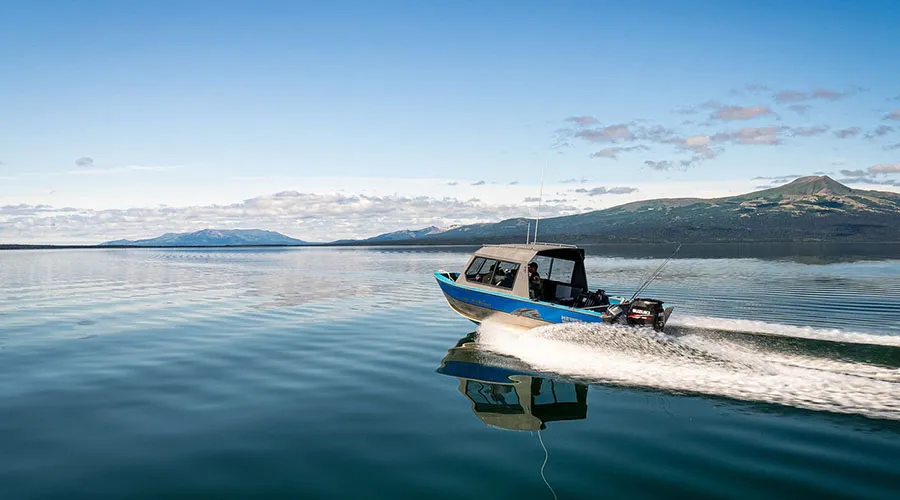
Places to stay in Lake Clark National Park and Preserve
Lake Clark National Park and Preserve provides various lodging options, catering to both outdoor enthusiasts and those seeking more luxurious accommodations.
Camping
Embarking on a camping adventure in the unmarked wilderness of Lake Clark can be an amazing and fulfilling journey. Proper preparation and meticulous planning will help ensure your trip is both safe and meaningful. In this remote area, you will encounter untouched nature, self-sufficiency, and peacefulness that is rarely found elsewhere.
There are numerous options for base camping, backpacking, and hiking throughout the park and preserve. Although the only maintained trails are part of the Tanalian Trails network near the park headquarters in Port Alsworth, visitors are allowed to hike in any open areas. The shores of lakes, coastal beaches, and high tundra offer excellent opportunities for hiking and camping.
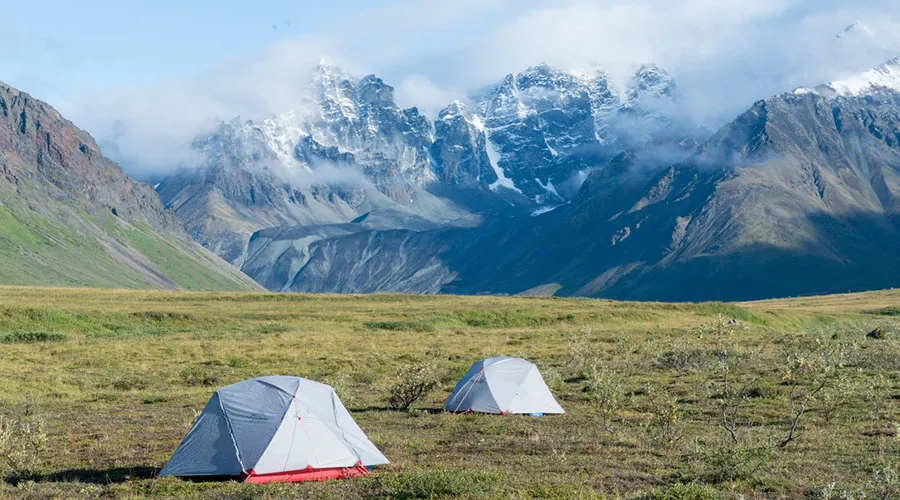
Hotel and Resort
If you’re looking for a cozy and well-equipped place to stay while visiting Lake Clark National Park and Preserve, there are a variety of lodges available inside the park.
Silver Salmon Creek Lodge (3-Star)
Nestled in the vast beauty of Lake Clark National Park along Cook Inlet’s coastline, you’ll find Silver Salmon Creek Lodge. This family-owned lodge is your gateway to an unforgettable Alaskan experience, offering top-notch amenities. Each guest cabin and lodge room is a unique blend of modernity and comfort, featuring queen and twin beds, full baths, sitting areas, personal heat sources, and electricity for a truly relaxing stay.
Address: West Side of Cook Inlet, Lake Clark National Park and Preserve, AK
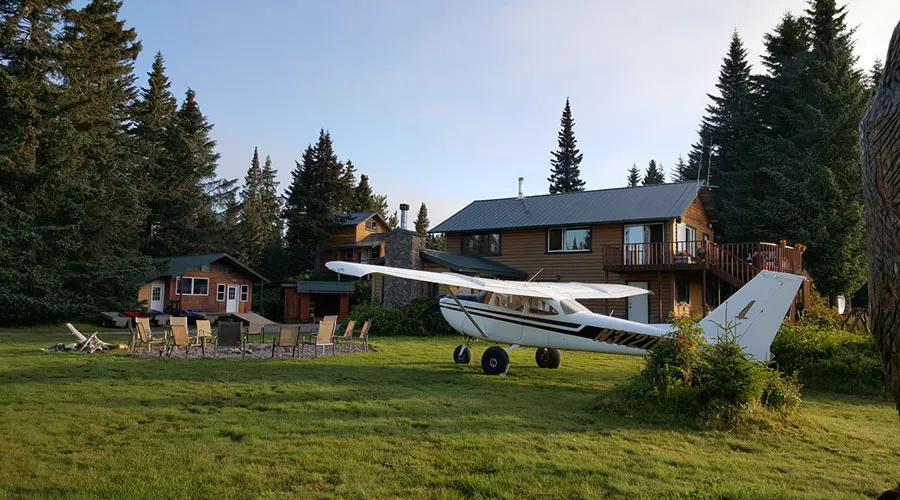
Redoubt Mountain Lodge
Redoubt Mountain Lodge has 6 private log cabins for 12-14 guests. The Main Lodge has cozy furnishings, fireplace, Internet, and TV. Meals are served in the dining room. The deck has stunning views. Cabins have one queen & one twin bed, shower/toilet/sink, heating, electricity, and views. Amenities include a hot tub, sauna, and fire pit by the lake.
Address: Lake Clark National Park and Preserve, AK
Price Range: 2 – 3 Days: $2,500 to $3,000 Per Person (Room prices are for reference only)
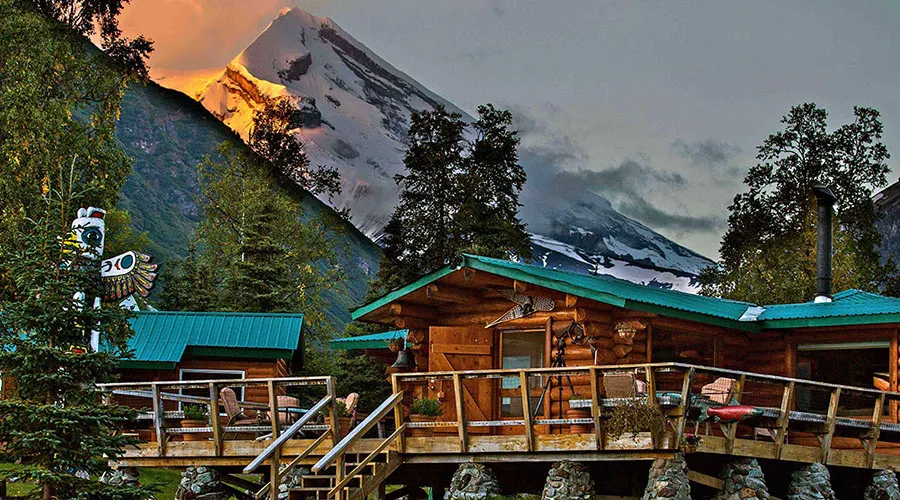
Alaska Homestead Lodge
Experience the charming rustic charm of the historic Homestead Lodge, now equipped with modern amenities. Each room is tastefully decorated to create a cozy atmosphere. Indulge in delicious meals prepared using fresh garden produce, including grilled salmon, baked entrees, homemade breads, and desserts.
Address: Soldotna, Alaska 99669, Lake Clark National Park and Preserve, AK
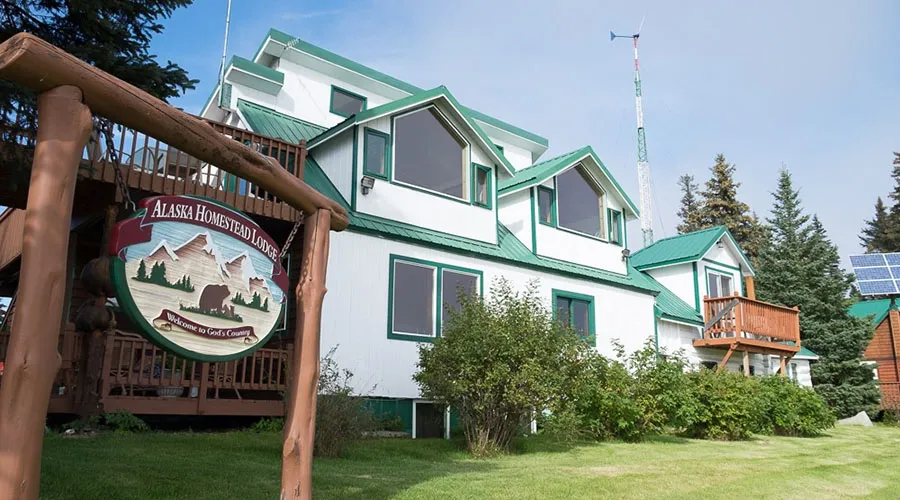
Dining
If you don’t stay at a lodge overnight, you need to bring your own food to Lake Clark National Park and Preserve. Dining choices in the park are scarce due to its remote location. However, visitors can still find different food experiences to keep them energized for their outdoor activities at Port Alsworth.
In the small community of Port Alsworth, visitors can find a handful of local restaurants and eateries serving up classic Alaskan fare. These establishments often feature fresh seafood, such as salmon and halibut, as well as hearty comfort foods and regional specialties.
Planning Your Trip to Lake Clark National Park and Preserve
Exploring Lake Clark National Park and Preserve calls for some thoughtful organization and readiness to guarantee a fun and safe adventure. It’s important to figure out the ideal time to go and sort out your transportation in advance, among other essential details when getting ready for your trip.
Visiting Time
The best time to visit Lake Clark National Park and Preserve typically depends on the activities you’re interested in and the weather conditions you’re comfortable with. The summer months, from June to September, are the most popular and accessible times to visit, as the weather is generally mild, and many of the park’s amenities and activities are in full operation.
During the summer, visitors can enjoy a range of activities, such as hiking, fishing, bear viewing, and flightseeing tours. The park’s wildlife is also more active during this time, making it an excellent opportunity for wildlife viewing.
The shoulder seasons, such as spring (May) and fall (September-October), can also be great times to visit, as the crowds are smaller, and the weather can be pleasant. However, visitors should be prepared for the possibility of inclement weather and reduced services during these times.
The winter months, from November to April, can be a challenging time to visit the park, as many services and activities are limited or unavailable due to the harsh weather conditions. However, for those willing to brave the cold, the park can offer a unique and breathtaking experience, with opportunities for activities such as cross-country skiing and snowshoeing.
Spring in Lake Clark National Park
Summer in Lake Clark National Park
Autumn in Lake Clark National Park
Winter in Lake Clark National Park
Transportation
Accessing Lake Clark National Park and Preserve can be a logistical challenge, as the park is located in a remote and inaccessible area of Alaska. The primary modes of transportation to and within the park include:
Airplane: The most common way to reach the park is by air, with flights available from various airports in Alaska, including Anchorage. Once in the park, visitors can arrange for flightseeing tours or charter flights to access more remote areas.
Boat: Visitors can also reach the park by boat, either by arranging for a guided boat tour or by bringing their own watercraft. The park’s main access point by boat is the Iliamna Lake area.
Visitors should be aware that transportation options within the park are also limited, with most access being by foot, boat, or small aircraft. Careful planning and coordination with local outfitters and guides are essential to ensure a smooth and safe transportation experience.
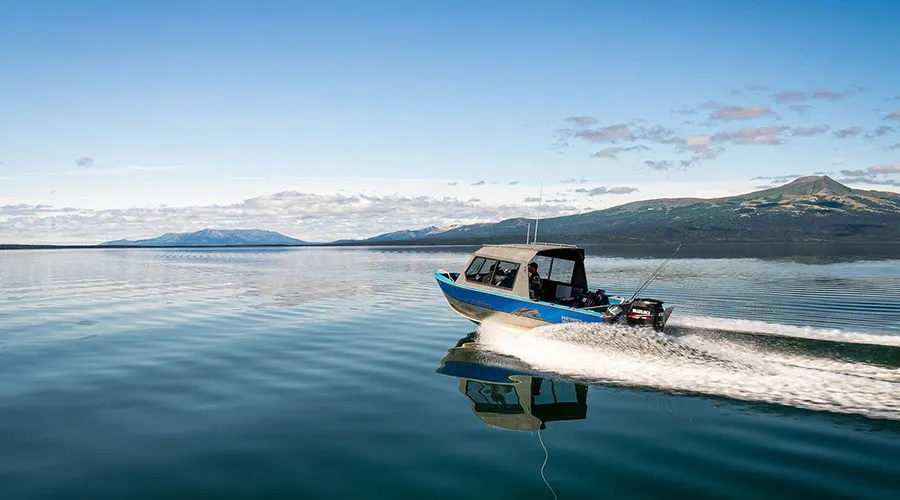
Conclusion
Lake Clark National Park and Preserve provides a beautiful and unspoiled natural setting for visitors to discover. There is a wide variety of activities available, such as hiking, observing bears, taking flightseeing tours, and fishing, ensuring that there is something for everyone who loves the outdoors.
A trip to Lake Clark National Park and Preserve guarantees an extraordinary adventure in one of the most secluded and stunning parts of the United States. Make sure to plan your visit thoughtfully, prepare your equipment, and get set to fully experience the marvels of this exceptional national park.
Lake Clark National Park and Preserve Photos
Q&A for Lake Clark National Park and Preserve
No, there is no entrance fee for Lake Clark National Park and Preserve. However, fees may apply for certain activities and services, such as guided tours and camping permits.
Pets are allowed in certain areas of the park but must be kept on a leash at all times. It’s important to be mindful of wildlife and follow park regulations regarding pets.
Pack essentials such as sturdy hiking boots, layered clothing, insect repellent, and bear spray. If camping, bring all necessary gear, including a tent, sleeping bag, and cooking supplies.
Yes, there are various guided tours available, including fishing charters, bear viewing excursions, and flightseeing tours. These tours offer expert insights and make accessing remote areas easier.
Swimming is possible in some areas, but the waters can be very cold. Always exercise caution and be aware of potential wildlife encounters, especially in bear habitats.
